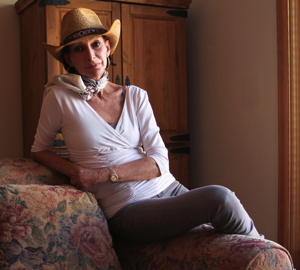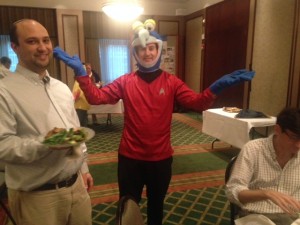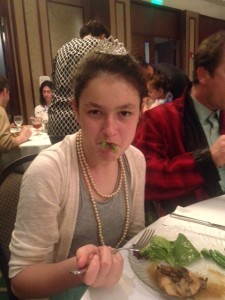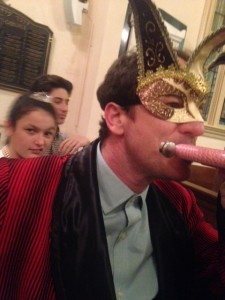-
 Jon Waits/@jwaitsphoto
Jon Waits/@jwaitsphoto
This week in the Civil Society Column:
THE RENOVATION of Savannah’s only Jewish museum holds important implications for all of us, even if you don’t know a knish from a kishke.
Listen, dahlink, this isn’t about theology or politics. And I’m not here to debate whether “Jewish” means a religion or an ethnicity or a secret ingredient that imbues regular chicken soup with magical powers. (My perspective continues to vary between a.) All of the above, but not all of the time b.) It depends; who wants to know? and c.) Oy, can we eat already? Pass the salt.)
Above all else, Judaism is a story, an epic tale that has survived pharaohs, pogroms and Hitler’s unspeakable evils, one intertwined with Western civilization. The tiny chapter written by Savannah’s Jewish community is not only unique, it’s essential to this city’s history—and its future.
It starts in July 1733 with Gen. James Oglethorpe, three months into his colonial experiment on Yamacraw Bluff. The good general had already lost a tenth of his troops to a mysterious marsh illness when the London-launched ship William and Sarah sailed up the river and requested amnesty.
On board were 41 Jewish pioneers, including Dr. Samuel Nunez Ribeiro, a descendant of Portuguese Jews expelled at the time of Christopher Columbus and forced to practice their traditions in secret. Dr. Nunez soothed those festering with fever and saved dozens of lives. Gen. O welcomed him and his band of freedom seekers as citizens of Savannah, granting them full rights and plots of land.
(Grateful as they must have been, you know somebody still kvetched, “We came across the ocean for this heat? And the bugs! What, we couldn’t find a nice place in New Amsterdam?”)
So right there, this act of tolerance and inclusion defined Savannah’s earliest days. Mickve Israel remains the third-oldest Jewish congregation in the United States.
“From the beginning, we were here,” reminds the timeline of the newly refurbished museum on the second floor of the Gothic synagogue on Monterey Square.
Indeed, American history is mirrored on every wall, from the portrait of Revolutionary War hero Mordecai Sheftall to the tasseled Chatham Artillery helmet worn by Chaplain Rabbi George Solomon. Original letters from George Washington, Thomas Jefferson and many more presidents congratulate the congregation on its major anniversaries—including one from President Obama on its 275th.
The installation also unblinkingly examines Jewish Savannahians’ roles on the losing side of the Civil War, documenting spy Eugenia Levy Phillips, whose sneaky efforts are credited towards the Confederate victory at Manassas. (Though being freed from Egypt is an important plot line in the Jewish story, some Southern scions ignored the cruel irony of owning slaves.)
Decades later, three Mickve Israel members became Juliette Gordon Low’s first Girl Scout leaders, and the museum chronicles congregational connections to the Mighty Eighth Army Air Corps and Tony-award winning play Driving Miss Daisy.
The crown jewels of the permanent exhibit are its oldest: Two deerskin Torah scrolls that date back to the 1400s, gallantly protected through the tumult of the centuries and now professionally archived under bulletproof glass courtesy of North Carolina-based Studio Displays, Inc. One is still used on holy occasions, though thankfully the ancient circumcision kit is not.
click to enlarge 
“We have all of these wonderful artifacts, and I’m thrilled to see them displayed professionally,” says Jane Feiler, who with her husband, Ed, collaborated with the late David Byck, Jr. and architect Henry Levy on the original museum in the 1970s.
Already one of Georgia’s top Trip Advisor destinations, the upgrade was made possible by beloved local attorney Alan Gaynor, who passed in 2010. Member Greg Mafcher volunteered to manage the project, and committee members Toby Hollenberg, Eileen Lobel, Ellen Byck, Herbert and Teresa Victor, Jules and Phoebe Kerness and Rabbi Saul Rubin went through the 400+ items piece by piece, parsing the tsotchkes from the treasures.
“We didn’t throw anything away,” promises Toby. My bubbe—who escaped from Poland in the 1930s and saved every scrap of paper because “you never know”—would be very relieved.
But my bubbe would also be wringing her hands over the news right now. Anti-Semitic violence and vandalism has surged across Europe in the past year, from the massacre at a kosher supermarket in Paris to the shooting of a security guard at a synagogue in Copenhagen. Even as Pope Francis and French Prime Minister Manuel Valls condemn them, the alarming rash of attacks on Jewish people, businesses and synagogues continues. Writer Jeffrey Goldberg asked in The Atlantic last week if it’s time for Jews to leave Europe for good.
Here in America, the FBI reported in 2013 that 62 percent of anti-religious hate crimes target Jews. Every day I see Facebook acquaintances conflate their criticism of Israeli politics with prejudice and hatred. The vitriol has shaken my conviction humanity has learned its lessons from the Holocaust—which wiped out not only a third of the world’s Jewry but millions of Catholics, gays, disabled citizens and people of color barely 70 years ago.
Next week, Jewish and Christian families around the world will gather to celebrate Passover and Easter, each with its themes of renewal and freedom. My family has always encouraged a macabre sense of humor, and my brother broke us all up at last year’s seder table with a joking game of “Who Would Hide Us?” This year, it doesn’t seem so hilarious.
Perhaps when we open the door for the prophet Elijah, we will keep the door cracked to remind us of how many people in the world still need amnesty, and how lucky we are to live in a country where our rights were written in from the very beginning.
As Jewish history brims with tragedy at every turn, here in Savannah it is far outweighed by triumph. Curated on Monterey Square is not simply preservation of the past, but a hopeful testament for a future where diversity of all kinds is honored.
Savannah’s Jewish story is just one example of how the principles of tolerance, acceptance and inclusion beget strong communities.
If you believe those principles are the path to healing our city, our country and maybe even the whole wide world, then it’s your story, too.













